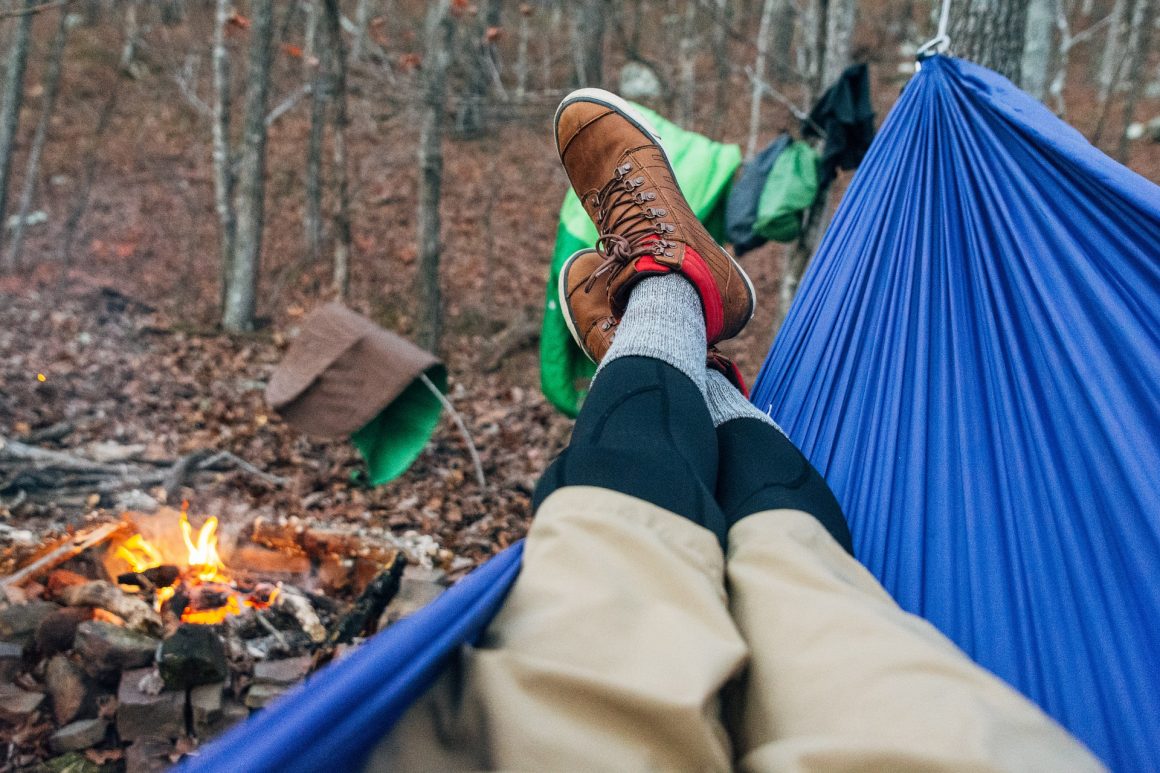
Camping still an option despite impending winter
By Calum Robertson, September 26 2018—
The mountains are calling. The forests beckon. But winter is fast approaching. That doesn’t mean camping is no longer an option! Here are a few tips and tricks to seize the season and enjoy the remainder of autumn before the snow arrives.
The few essentials you’ll need mostly reflect our basic needs — food, water, shelter and clothing. Getting warm and staying warm is essential, especially as the nights grow colder and the days have a chill in the air. For shelter, your best bet is a tent. You can either have your own tent or buddy up with a camping pal. When packing your tent, make sure you have the tent itself, as well as the fly, poles, pegs and occasionally a ground tarp. Many tents don’t require a ground tarp underneath to stay dry, but always double check when packing to make sure. These items will ensure your tent stays dry and anchored in place.
Inside your tent, you’ll want to make yourself cozy with a sleeping mat and sleeping bag. Many sleeping bags state what temperature they are designed for — but don’t always take the label as gospel. Sleeping bags designed for ‘fall’ aren’t always designed for fall weather in Alberta, so choose something with a rating of -15 C or below. A sleeping mat will become your best friend by making any surface much more comfortable. While it isn’t as comfortable as a mattress, a foam or air-inflated mat will bring comfort to your sleep. If you have the space for it, bring extra blankets and a pillow. Embrace a little luxury — your back and neck will surely thank you.
Choosing appropriate clothing can be tricky without knowing what kind of weather to expect. Check the forecast before you go but prepare for the unexpected. You can take off layers if the weather is warm but if it’s cold you can only put on what you brought. Warm coats, a good pair of boots and pyjamas are all helpful.
Modern technology has gifted the world with the portable propane stove, an excellent tool for camp cooking that expands your culinary repertoire beyond roasted wieners. Camping stoves that run on a propane tank and have a hob allow you to use pots or pans on them. There are many varieties of the basic model, so be sure to consult the manual. Soups are usually a good item to pack since they take up very little room.
The other helpful thing about camping stoves is with regard to water. Most sites will have a water pump but the water may not always be potable. Boiling your water will kill off any harmful bacteria that might be lurking around. An alternative to boiling water is water purification tablets. These can be purchased at most camping stores and are especially good for backpacking trips.
Food is really up to you. Plan your meals beforehand to prevent running out of food or bringing too much. In my experience, I’ve found it’s best to bring food that is on the healthier side, that I find tasty and that I can actually cook in a camp setting. When planning, keep storage in mind. Many campsites are near parking spots, so store your food in your car to prevent friendly and not-so-friendly critters from investigating.
If your site is far from your car, consider bringing a bear box or setting up a bear hang. A bear box is a heavy wood storage unit that deters most animals from breaking in. Many sites will have bear lockers, which are very similar and don’t require you to bring anything. A bear hang is more common the further afield you go and involves a designated ‘bear-bag’ and a good rope. Stick all your food, your dishes and any products with a scent — such as toothpaste or deodorant — into the bag. Find a tree a suitable distance from your site with a solid branch around three metres high and stretching outward. By tying the rope to the bag and tossing the rope over the branch, you can hoist the bag up and out of reach of wandering wildlife. Tie it off to a nearby tree. Have your bear-bag hang slightly below the branch and not directly on it in order to keep it slightly out of their potential reach.
Stores such as Mountain Equipment Co-op offer a myriad of gear options, though their items are usually more expensive. Other store options include Atmosphere and Canadian Tire. If you foresee camping becoming a huge part of your life, consider making the investment. For the casual camper, it might work better to rent equipment. The Outdoor Centre right here on campus offers gear for many kinds of outdoor pursuits, including camping. Gear and prices are listed on their website. Rachel Oggy, the hiking/packing program co-ordinator for the Outdoor Centre, has some advice for the thrifty student.
“If you’re looking to buy some gear rather than rent it, there are several gear stores in town, but a great way to start up without spending a lot is second-hand gear,” Oggy said. “The MEC gear swap is a great place to buy from other outdoor enthusiasts and much better organized than something like Kijiji — though there’s plenty of outdoor gear offered there as well.”
Fall is a wonderful time to get outside and explore, with changing weather and quiet trails that are yours to explore. As always, do your research before heading out. Let others know your plans, especially if you’re camping on your own in case anything unforeseen occurs. Make sure to enjoy your time off-campus and away from the city. And above all, stay warm, stay dry and stay happy.
